Olga Hohmann
Only Speculating
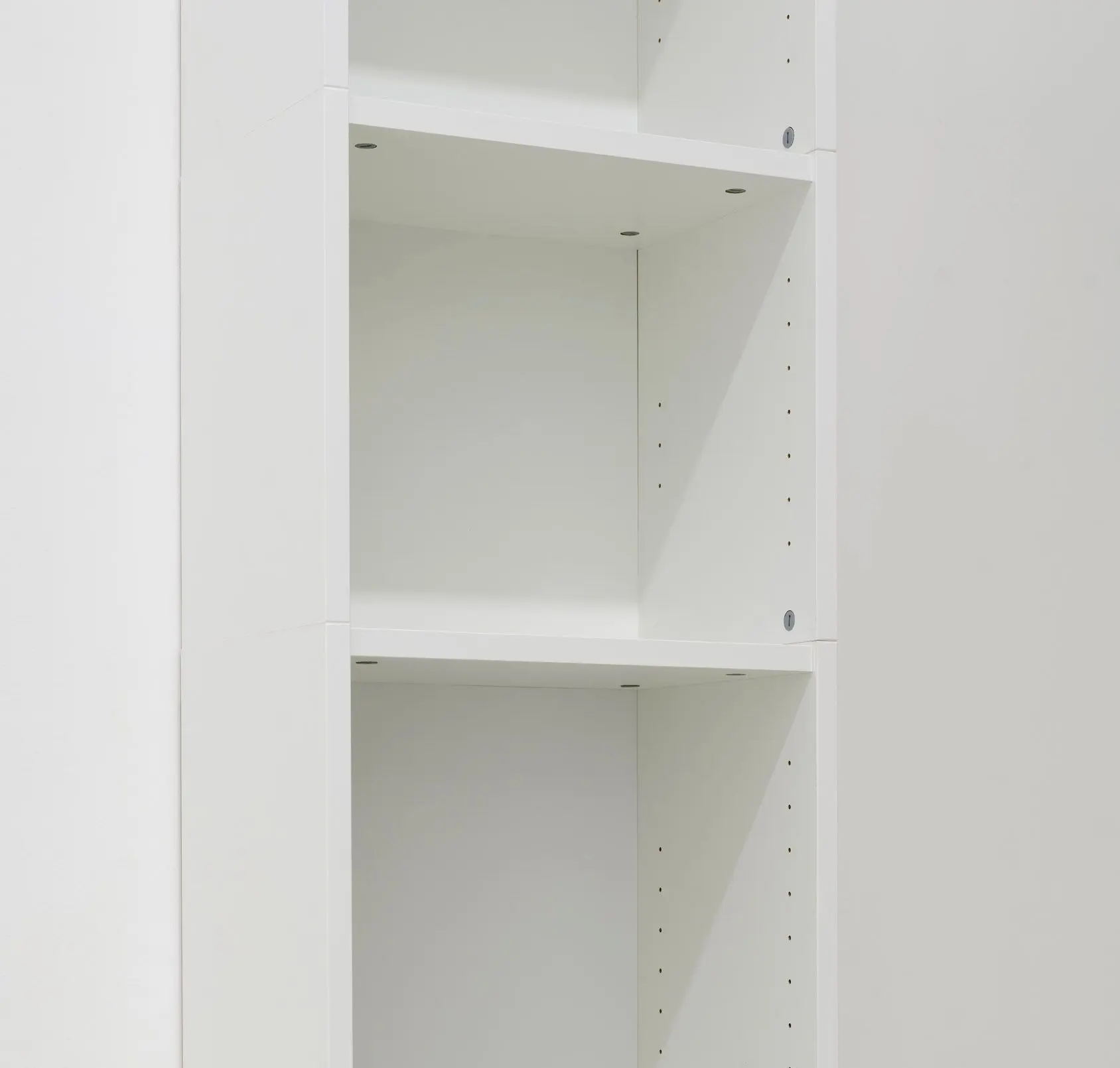
Thinking inside and outside the shelves –– a response to Sanna Helena Berger’s Nicht-nur-Spekulativ at Philipp Zollinger, Zurich.
I was originally supposed to come to the opening, but I didn't make it –– my part-time job as an art mediator was waiting for me in Berlin. Sanna sends me the text she wrote for the exhibition and I read it on the ICE while drinking sour coffee from the on-board bistro, which always gives me stomach cramps.
I am startled: the language she both uses and criticises (in a tongue-in-the-cheek manner), in a"durch den Kakao ziehen" sense (dragging through the cocoa), is exactly the language I will use the next day in my role as an art mediator. I’ll speak in a distanced manner of "paradigm shifts", rendering problematic pieces, diplomatically, as "controversial" or "polarising" and point out the "process-oriented" in opposition to the "product oriented" when we look at pieces that are simply unfinished. I am using precisely the kind of language that Sanna indulges in, cheerfully and sceptically in equal measure, thereby both elevating herself above it and confessing to be a representative of this very rhetoric. While I remain professionally vague, forbidding myself and my guests to actually experience the pain of controversy, to surrender to the experience inherent in the act of looking at art closely.
But drinking sour coffee (now bitter), I let myself "be dragged through the cocoa", feeling uncomfortable and at the same time happy to have been caught by Sanna as "Ein Gegengewicht zu den stummen Prozeduren"
She sends me three not very revealing iPhone photos of her work –– and of course this is exactly what Sanna is doing in her solo exhibition:
Remaining enigmatic while condemning the all-too-vague.
I look at the photos as closely as my own small iPhone screen allows –– in other words, not very closely:
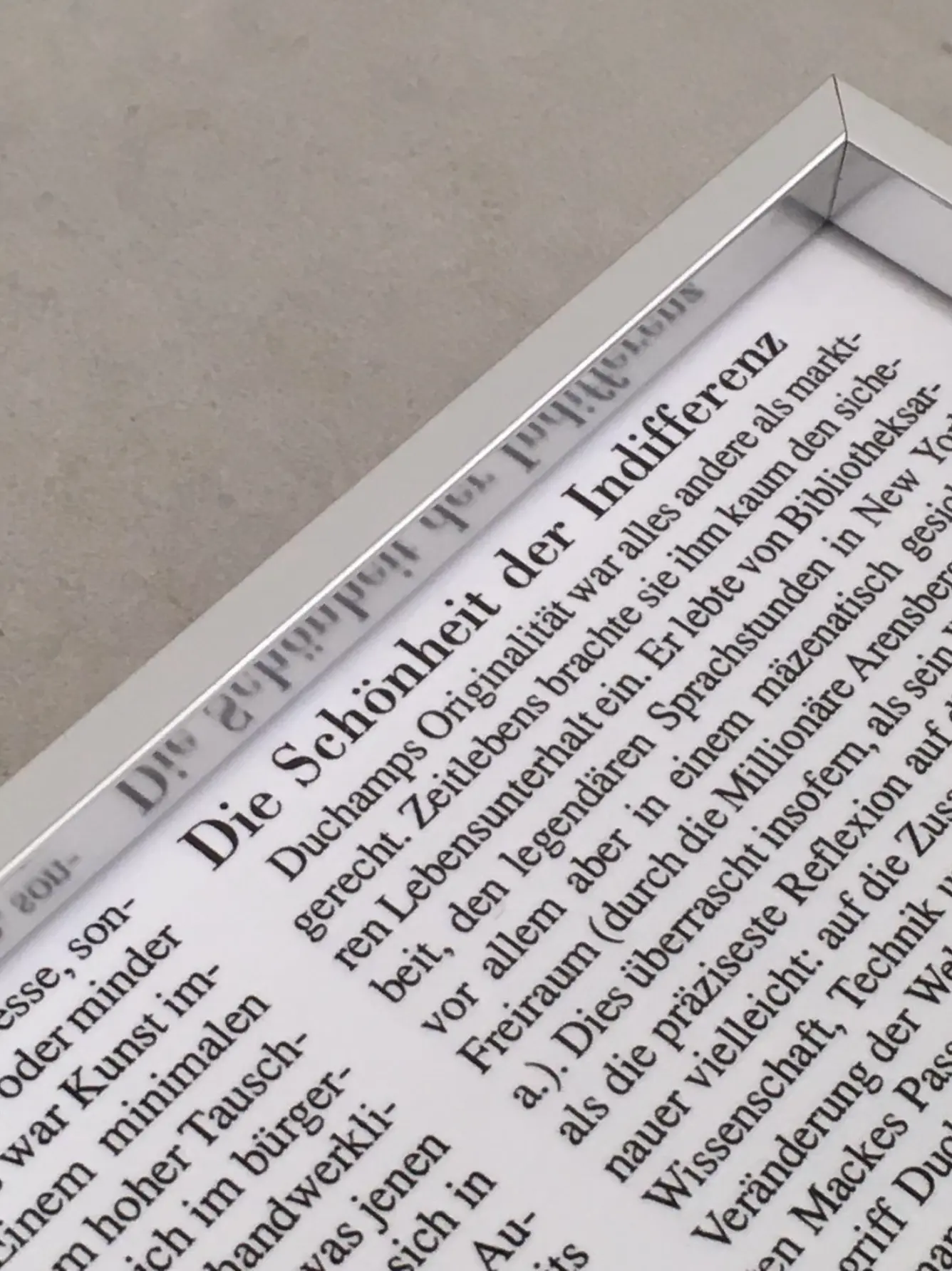
1. A framed excerpt from a text that she doesn't seem to have written herself.
"Die Schönheit der Indifferenz" (The beauty of indifference) is typed in a font that I associate with theory publications. I read it as both an accusation and an affirmation. An affirmation of beauty. An indictment of indifference. The text seems to be about Marcel Duchamp –– I automatically think of Sanna's concept of the "unreadymade":
"The "unreadymade" can be seen as an intentionally intellectual and critical creation by an artist, who’s work mimics or imitates an everyday object, blurring the lines between what is found (post-produced) and what is fabricated or altered (produced). By manufacturing, producing or altering an object to appear as an already existing object, the artist engages in a deliberate act of refocusing, challenging and accentuating, not only the viewer's assumptions about authenticity, value, and meaning, but that of the act of displaying and showing."
"Beauty always plays a role, but it has to remain a secret," a mutual friend once said.
I ask myself: is it the ugliness that is present as a secret in Sanna's work?
Miriam Stoney asks herself in the accompanying text: "Sanna, am I accusing you of civilising the real?"
When I read "the real" I automatically think of Psychoanalysis and yes, in Psychoanalysis "the real" is often ugly, or rough, at least: The crocodile that lives under the sofa and bites the subject if it stops believing in its existence.
The inaccessibility, the abstinence, the aseptic, the Noli Me Tangere seems to have been exhausted –– or at least exposed as an illusion. There must be a crocodile living inside Sanna’s exhibition.
The consumption of non-consumption is no longer appealing, because it is quite obviously escapist, an attempt to (lazily) avoid staying with the trouble. But staying with the trouble has also exhausted itself. The observer's position has begun to tremble, to shake.
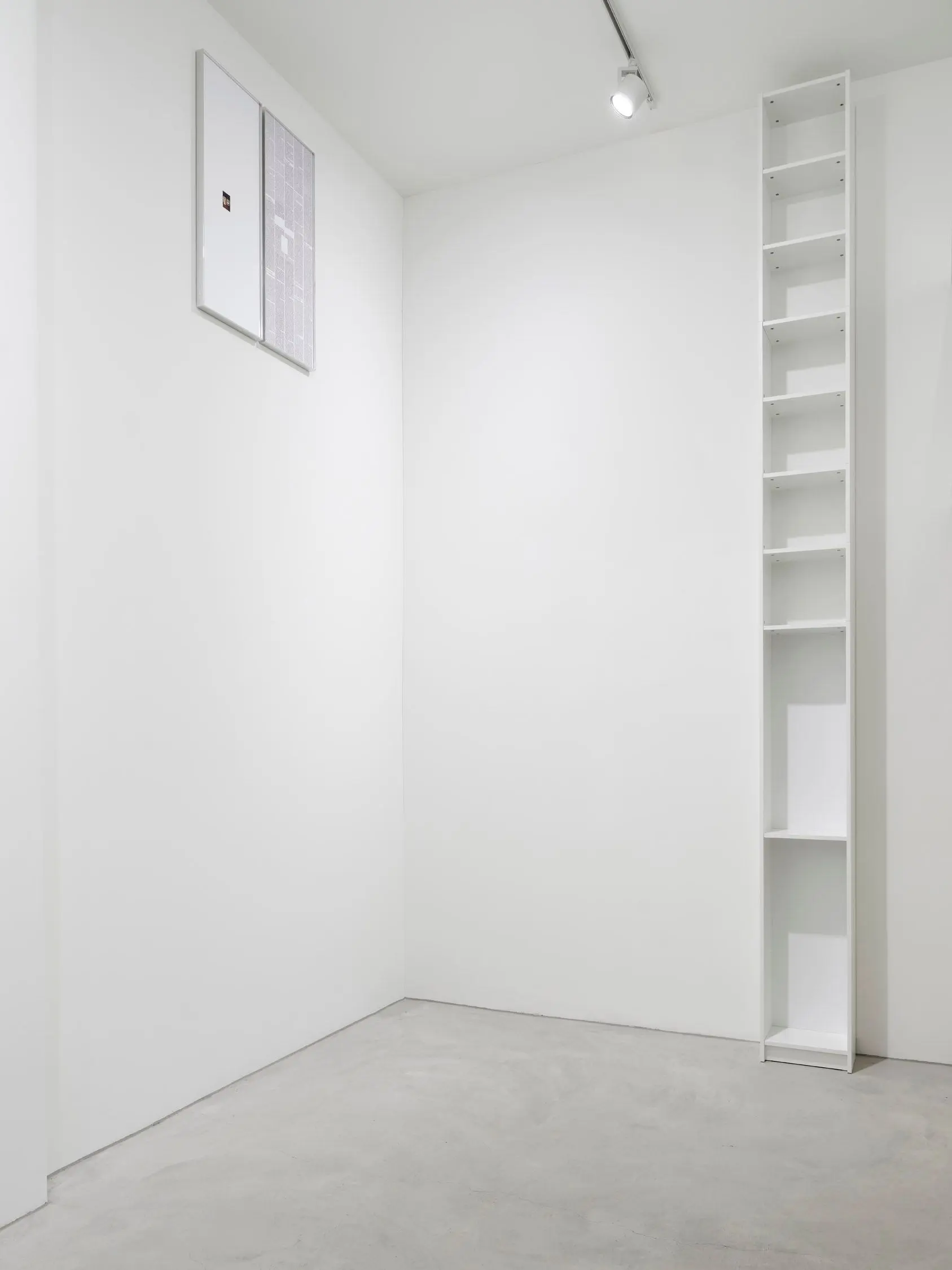
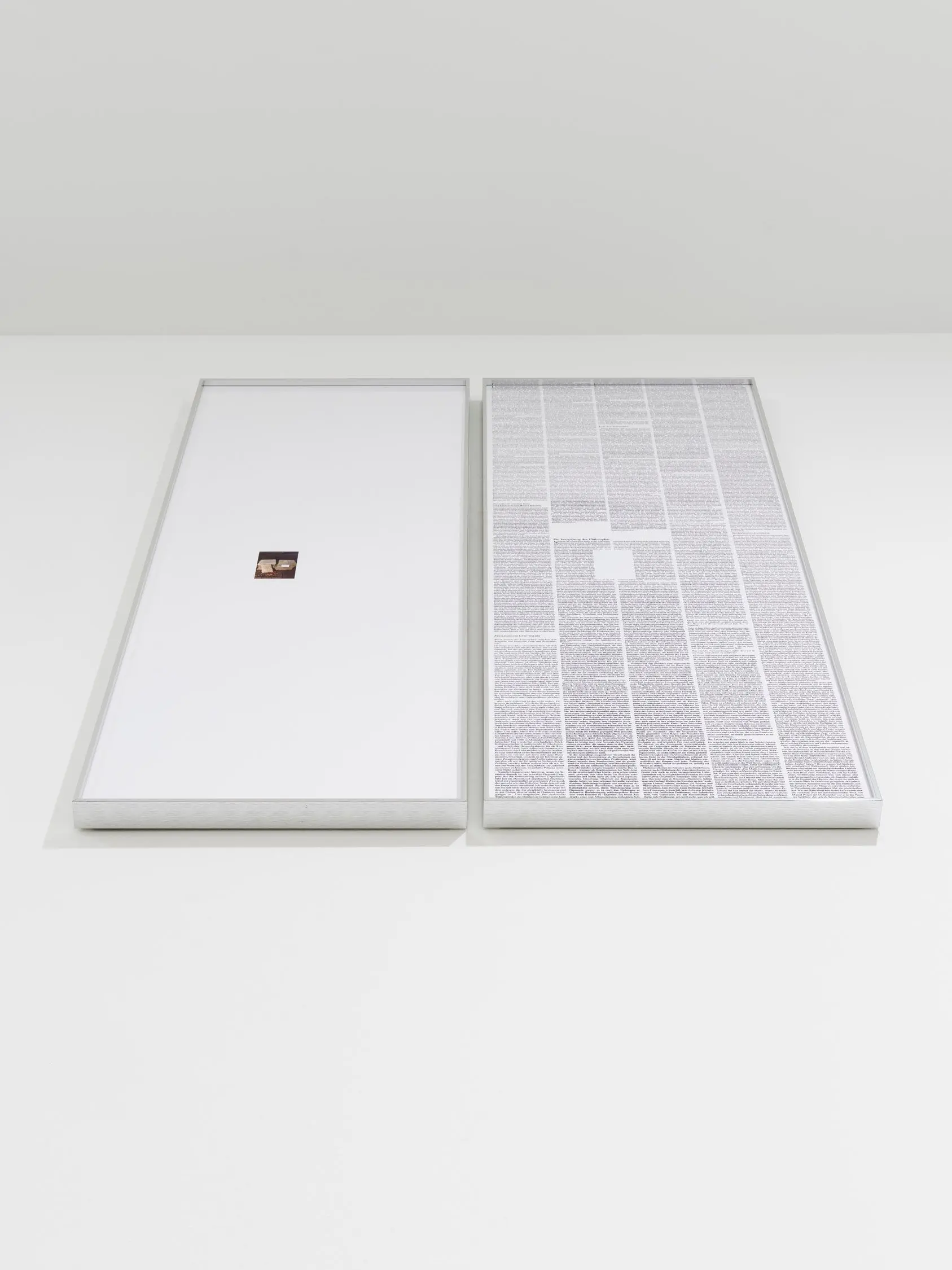
Funnily enough my absence is what puts "Die Schönheit der Indifferenz" into focus. Because, as a spectator, you can’t actually read the sentence. It sits at a great height and some distance, looking up or across the balcony from which you can view it.
Sanna writes:
"The distance at which we see the work, the movement it evokes, the invitation to see if from across the space creates a kind of anti-viewing-viewing-deck, rendering both text and image illegible. An act of enforced distancing which mimics the limitations that artworks are impositioned by, by a present preservation-curation in which the safety of the work, and thus the human distance to it, determines its placement or surrounding obstructions (safety measures) which creates a new condition through the distance at which it places the viewer to the artwork in what seems a Sammlungs-Interaktions-Prozedur-von-Bewahrung-Konzerne-gegen-originelles-denken-inhärent-in-den-Kunstobjekt-sind-ism."
And I project my personal questions onto the literal inaccessibility of the piece:
I think of the impossible task of wanting something from someone. Frightening, irresolvable.
Again and again I come to the same conclusion: Wanting something from someone is dangerous, but it's worth it.
In German, "Ich will was von dir" literally means "I'm in love with you".
Also: Always a feeling of literal insecurity.
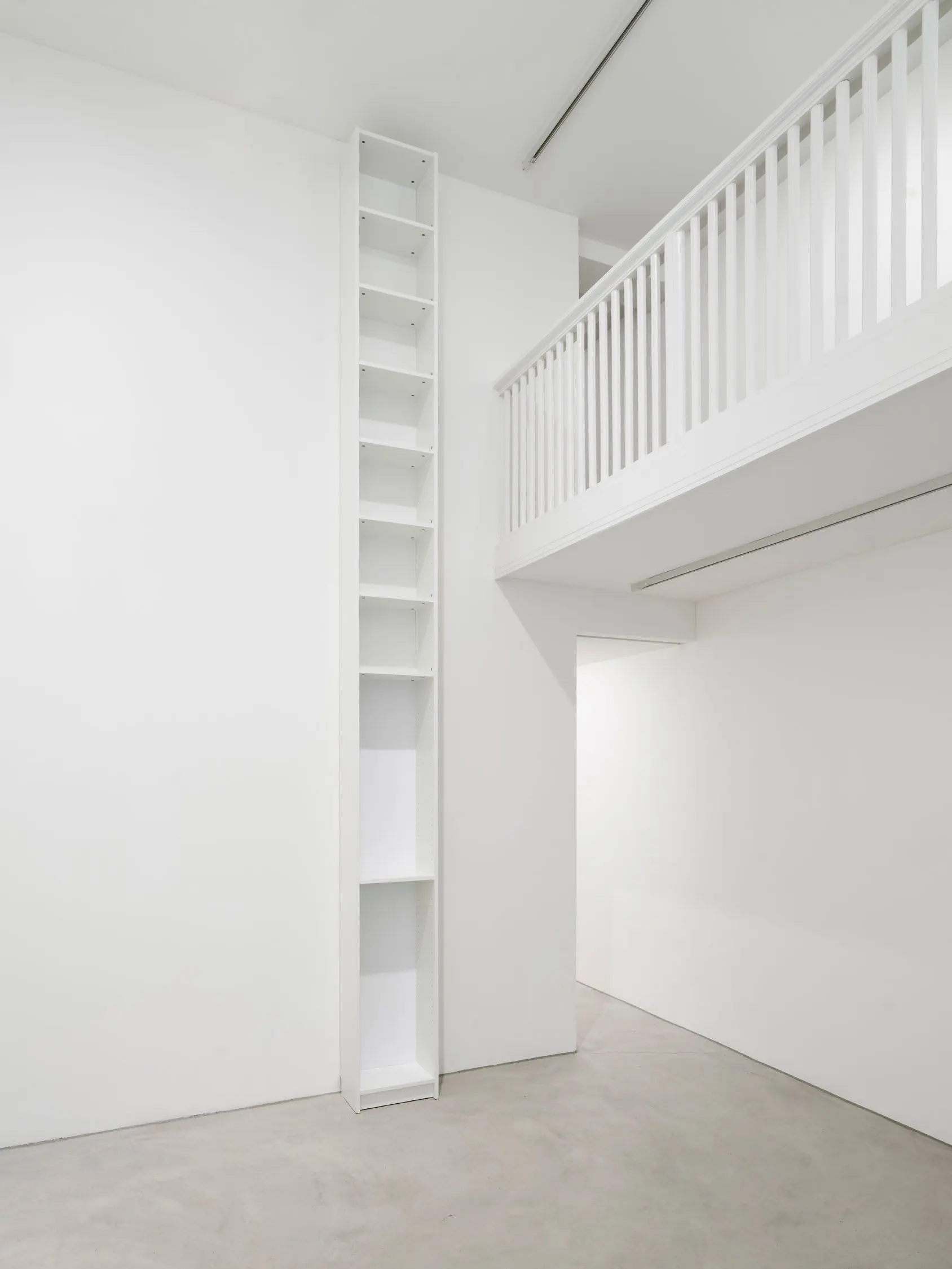
2. The second photo is an empty shelf. As high as the very high room.
Reminiscent of IKEA furniture. The individual shelves are sometimes very similar, sometimes very different distances apart. I think of the principle of notation: How Le Corbusier incorporates a composition by Iannis Xenakis into the architecture of his fair-faced concrete monastery near Lyon "Sainte-Marie de la Tourette". The monks' individual cells are designed according to the "Modulor" unit of measurement developed by Le Corbusier. I think of the concept of the canon, but also of standards and guidelines: The shelf has to be refilled, the formats do not yet conform to any standard –– or not anymore.
Looking at the history of standardisation is also a gesture that puts the apparent self-evidence of things in a literally questionable light. In Germany, the DIN standard was invented just over a hundred years ago, in the 1920s –– certainly a moment in history that is worth studying today.
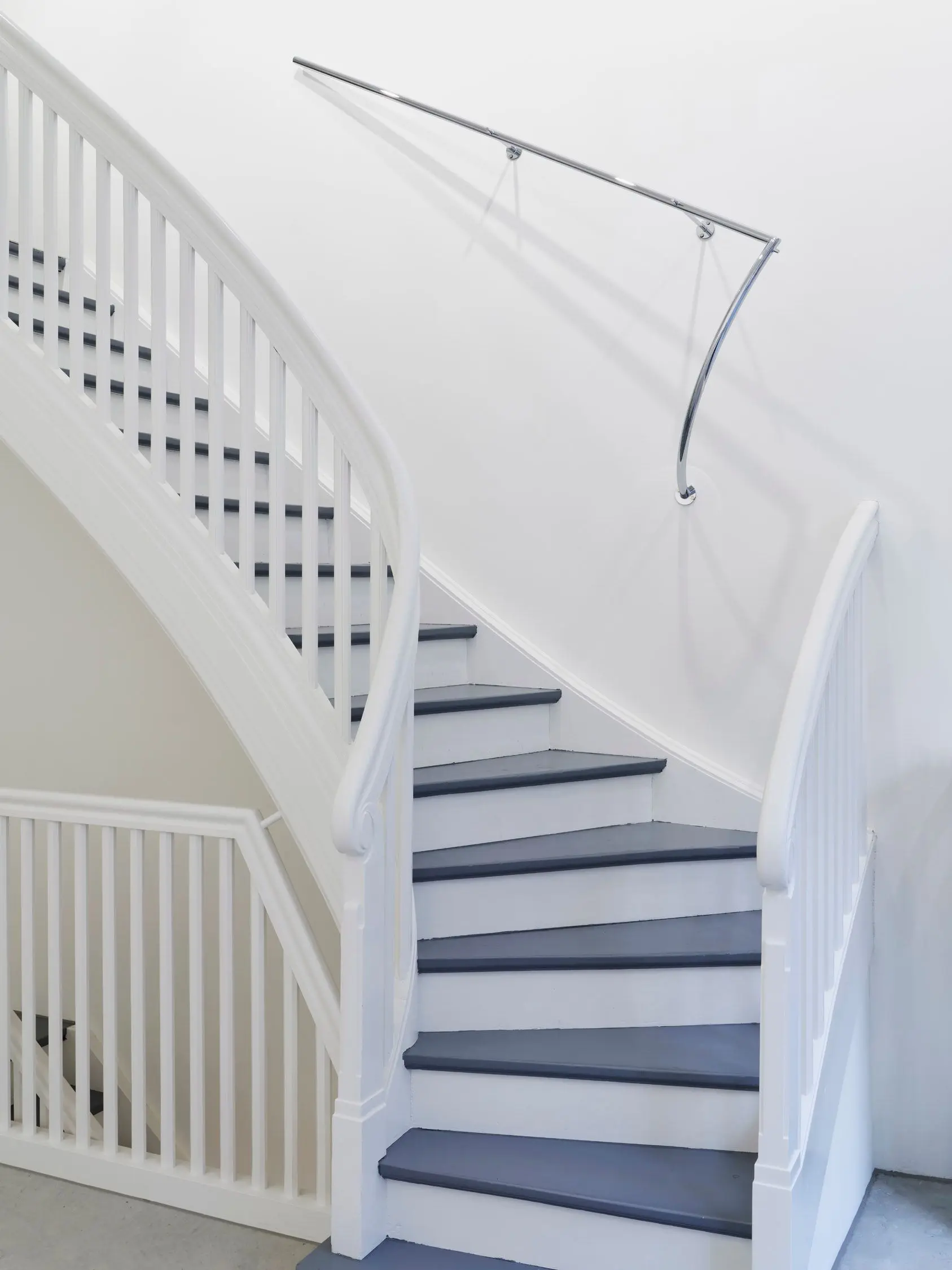
3. The third is a found object repurposed as a metal handrail.
It's so shiny that you could see every fingerprint on it. It hangs a little too high. It has a vibration, as if it had melted and then solidified again, like chocolate that has suddenly turned white. But it radiates nothing sensual. It is more reminiscent of the devices found in the showers of assisted living facilities. "Assisted living" –– don't we all need some professional assistance? The piece is the product of a thought experiment –– nothing is as it seems, but it shines hazily in different directions.
I think about what it's like "to lose grip" or, as they say in German "to derail". The self-evident suddenly becomes an open question. Even the auxiliary devices that you had previously held on to "in case of doubt or uncertainty" turn away from you or dissolve in your hands, in the only seemingly secure grip.
Everything is a bit wacky in these pictures and yet there is nothing fabulous, nothing fairytale-like - and not much funny either. It is not a "whimsical" upside-down world as in "Alice in Wonderland", it is a powerlessness that is shown –– the powerlessness that goes hand in hand with the actual "paradigm shift" in the role of the affected.
In moments of transformation, you sometimes lose your speech. You are then helpless to formulate a thesis, you stutter or stammer. And the poetry also gets stuck in your throat –– there is nothing poetic about losing your voice. Sanna's works are not metaphors, rather they carry within them the impossibility of finding a visual simile. They are radically secular in their ban on images. They are insufficient in the best sense of the word, in that they also say: there is no consolation.
Sanna's text on her exhibition begins with an observation of spaces. Spaces that have arranged themselves around works of art –– that have been constructed to serve the pieces –– and not the other way around. And spaces that refuse to give the pieces the space that they actually need.
"...The ceilings are high and the width is determined by a giant Max Ernst piece –– "Pétales et jardin de la nymphe Ancolie" from 1934, which makes me think of building buildings which adjust to the measurements of art rather than adjusting art to the measurements of buildings.
…There is a known banality in treating art as interior, but I’d go further and question the accessorising of art into an already existing life. Art should disrupt life and disturb the status quo, not melange seamlessly in, not become a placated component assuaged into the collector’s composition."
I spontaneously think of the very few places I have encountered where the principle of "space growing around art" was at work. I don’t think of the examples for the opposite –– they’re just too many.
1. The domed hall in the Segantini Museum in St. Moritz, into which the light falls through the ceiling. I see a cycle of paintings that can represent the course of daylight within a day, a year, a lifetime. The daylight that falls into the room from above, too. Time –– another normative system, an arbitrary but authoritarian agreement.
2. Erika Hoffmann's private living room in Berlin, a penthouse that has grown around a huge work from Frank Stella's "Moby Dick" series (the guests keep asking: How did this get in here? And indeed, it feels like sharing the room with a stranded whale).
3. The museum of the Ritter family, who only collect square art –– and finance it, of course, with square chocolate.
The art-house ("Kunsthaus") or "art-house-art" ("Kunsthauskunst") becomes "house art" ("Hauskunst"). The readymades become unreadymades, which exhibit "Objektschwäche" ("weakness for the object"), and mimicry is presented as an opposition to mockery.
Sannas word games seem slightly clownish in their mimicry of "theory terms" and enthusiastically stumble over themselves, like "Selbstmontage-Kunst, untrennbar von einem Formalität-definiertes-Thema –– das banal-große (signifikant-hoch) -galerie-spezifische Objekt".
But still, a sense of unease remains. And the discomfort itself is presumably theatrically embedded in the work. Sanna doesn't suggest anything, but she does make a point –– and raises her eyebrows slightly: about the beauty of indifference, Inutile Beauté, which suddenly feels vulgar, brutal –– and, indeed, ugly. Sanna does not think "outside the box", that is, "outside the shelves" –– she changes the norm, the shelves, themselves and not only brings to light the already present "weakness of objects" (Objektschwäche), but also the "weakness of the subject" (Subjektschwäche) that the viewer carries. The role of the observer has become a guilty one. Indifference is not beautiful (anymore).